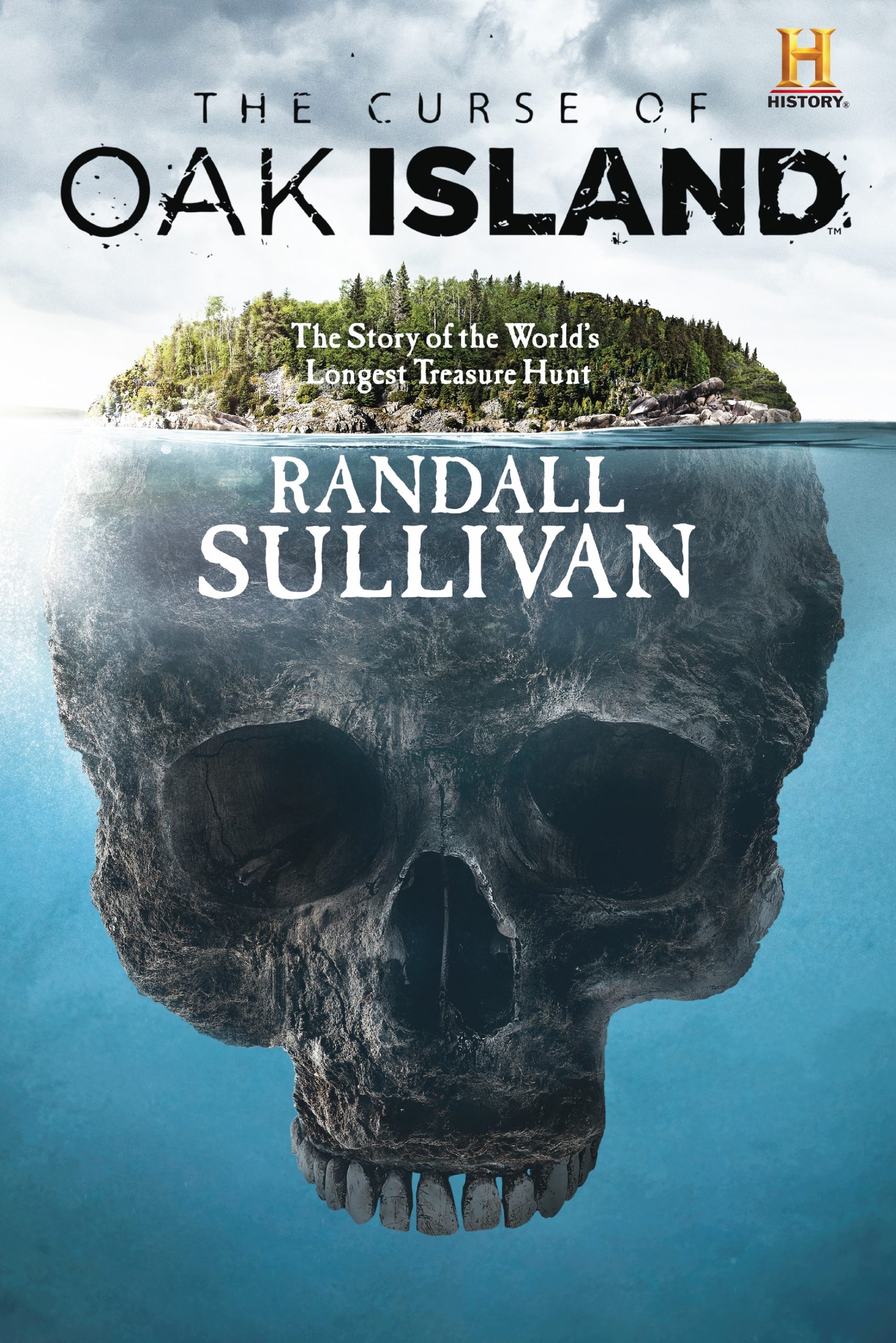If you’re a fan of hidden treasure stories and historically puzzling places, then there’s no way you don’t know what “The Curse Of Oak Island” is all about! Sure enough, seeing the Lagina brothers and their team explore and investigate the centuries-old myth surrounding Oak Island has had your attention for perhaps too many years now?
That being said, it’s understandable if you haven’t been as up to date with the show as you might want. With over 150 episodes aired so far, and a long list of discoveries to be proud of, you would be surprised to see how many things in “The Curse Of Oak Island” you’ve missed.
So do you want to know about what this team has found so far? Keep with us to discover all about the findings by the Laginas on Oak Island and the history behind it.
Ancient Coins
Regardless of its size, every discovery made on Oak Island is worthy of some excitement. In the first season, a Maravedi coin was found in the swamp, and though at first sight not a lot could be said about it, a very visible number eight engraved on one of its faces kept the team’s hopes high.
In the second season, the Iberian coin was thoroughly examined, revealing that not only is it dated from the year 1652, but also that it had been in the Island’s mud for at least a couple of centuries. Such a finding was a great precursor for hopefully more exciting discoveries, such as a silver coin found by Gary Drayton and his metal detecting tools. At first this piece was thought to be related to the Maravedi coin previously found, but an examination revealed its engraved symbols surprisingly resembled the cross used by the Knights Templar.
In the fourth season, the team searched in what used to be Samuel Ball’s property, finding another coin with no visible engrave marks. Later on, many other coins apparently dated from the 18th century, and a plate similar-looking to the bottom of a FlintLock firearm were unearthed from Ball’s property.
Ancient Manuscripts and The Baconian Mystery
Back in the 19th century, Oak Island’s treasure was already so well known, that several explorers established themselves in the area. One of the earliest companies to do so was the Oak Island Treasure Company, whose searchers apparently found pieces of parchments, that the company fortunately found important enough to record its existence on their business prospectus in the late 1800s.
Although this isn’t a discovery made by the Lagina brothers’ team per se, in “The Curse Of Oak Island”s seventh season, they along with other experts and William Shatner theorized that these parchments could be one important piece of a bigger puzzle.
It all comes down to the never-ending debate about Shakespeare’s authorship actually belonging to others, such as the scientist and lawyer Sir Francis Bacon. As Gary Drayton commented in the episode, Bacon developed a document-preservation technique using mercury, which coincides with the substance the Laginas found in the swamp in 2019.

This could support the theory presented in the 1953 book “The Oak Island Enigma”, which claims that not only Bacon could have written Shakespeare’s plays, but also that the manuscripts proving this thesis are the treasure hidden in Oak Island’s Money Pit.
17th Century Items
The number of items dated from the 17th century that have been found on Oak Island during the course of the show is actually astounding. Besides the many British and Spanish coins found, in the second season the Lagina brothers’ team found a metal button.
Though there’s no real proof of where exactly it came from, it’s theorized this piece could have been part of a soldier’s uniform from the 1700s, supporting the claims that the hidden treasure was buried by people involved with the military. Another circular piece was found in the fourth season, and though at first the team thought the artifact was a gold coin, later research found out it was another button from a British military uniform.
Later in the fifth season, a cut piece of Maravedi along with musket balls from the 17th century were found as well. This time the suspicion fell on the pirates of the time, who supposedly cut Maravedis as a superstitious tradition.
A Keyhole Plate
The Laginas’ team have access to some high technological tools, of which most treasure hunters could be jealous. However, using a common metal detecting tool is what has proven to be the most effective way to find small artifacts, as seen in the show.
One of these small but seemingly important metal items is the keyhole plate that the brothers and Gary Drayton found in the property fomerly owned by the treasure hunters Fred and Tom Nolan. After hearing the detector’s beeping, and digging up a bit of mud, they discovered a flowery-shaped keyhole, which they suspect could have been part of a chest. The artifact’s condition was quite good despite erosion, but its asymmetry made them suspect that it’s hand-made and very old.
Uncovering The Mystery of The Roman Sword
While most discoveries made on Oak Island hint that a treasure of some sort could be hidden somewhere, a couple of times these discoveries have only ended up in false leads. Such is the case of the Roman sword found on the coast of the Island by a local citizen in 2015. This item was considered of interest to “The Curse Of Oak Island”, given the several theories which state that the mythical treasure hidden on it could be related to the stolen items from King Solomon’s palace in 70 AD.
After being given access to the mysterious item, the Laginas’ team traveled to Saint Mary’s University in Halifax, looking for answers that locally only the Roman Archeology expert Miles McCallum could give them. However, after a thorough examination, McCallum concluded that despite its old-looking appearance and iconography, the markings and forging method wasn’t proper of the ancient Romans.
We're so happy there is a new episode tonight! #CurseOfOakIsland pic.twitter.com/XFWeuiBPql
— Curse of Oak Island (@CurseOfOak) April 19, 2022
According to McCallum, the sword was nothing more than an artistic replica of a real Roman sword, probably made in the 18th century, but how and when such an item ended up on Oak Island wasn’t determined. Regardless of the disappointment, Marty Lagina admitted to not having ‘ruled it out yet’.
The Roman Javelin
Although the Roman sword turned out not to be what the Laginas expected, their hopes of finding traces of this ancient civilization on Oak Island were relieved when an unexpected discovery was made in the sixth season.
While Gary Drayton is normally in charge of looking for metal on the island, in 2018 a deeper search was led by the local geophysicist Mike West. That day the discoveries were vast, starting with some metal hooks and spikes buried several meters under the mud, however, the team hit the jackpot when an arrow-looking artifact was found as well.

Despite the erosion, the item was in good condition and was given to Gabriel Vandervort, whose expertise in antiques allowed him to determine that the bolt wasn’t an arrow, but the upper part of a Roman-made Javelin known as pilum. According to Vandervort, said pilum is most-likely dated to the first through the fifth century, but further scientific investigations are still yet to be made.
A Connection To The French
Since “The Curse Of Oak Island”s premiere in 2014, the Lagina brothers have found several military items related to the Spaniards and British. However, it wasn’t until the sixth season that an artifact most likely belonging to a French official was found on the island.
Although its origin wasn’t confirmed, Gary Drayton theorized that the unearthed item was part of a military badge, presumably from the 18th century given its resemblance to the caps worn by French’s grenadiers at the time.
While Drayton’s claim might have been too hopeful, his theory took force later in the eighth season an area baptized as Eye of the Swamp was discovered and took the team’s attention due to its unnatural shape. Following a carbon dating test, it was determined the items found in the area hinted at human activity there dating back to the 17th century.
The swamp also contains a paved or docked wharf, strengthening the theory that a deck was built in order to transport items from a ship. According to historian Chip Reid, these findings could be linked to the French military in the Fortress of Louisbourg, who are believed to have hidden their treasures from British troops in 1745, making Drayton’s early claims look more plausible.
Pieces Of Bones
One of the most surprising findings in “The Curse Of Oak Island” happened in 2017, when researchers found pieces of an initially unidentifiable material in the H-8 area of The Money Pit. Upon further inspection, Rick Lagina and his team theorized said fragments were lignum vitae, a type of ‘super dense wood’ from the Caribbean.
However, the archeologist Laird Niven determined later that the item was actually bone, surprising everyone in the War Room. Following Craig Tester’s advice, the Laginas took the bones to be DNA-tested at Saint Mary’s University, where it was determined that they were human, and belonged to a Middle Eastern person, strengthening the theories about the Oak Island’s treasure being directly related to the Knights Templar.
The Brooches
Some of the most interesting finds on Oak Island are definitely the several brooches found there. The first was in the fifth season, when Rick Lagina and Gary Drayton explored Lot 8, an area located on the North side of the island, where they discovered two separate look-a-like items, one of which included a gorgeous-looking red stone.
Upon closer inspection, Rick and Gary theorized that the two artifacts were most-likely part of one brooch.
Later on, a gemologist examined the pieces, and found out that not only the whole piece dated to the 1600s, but also that its jewel wasn’t a ruby as the Laginas initially thought, but a rhodolite garnet.
As if that wasn’t exciting enough, the following season they explored Lot 21 near the house of the former treasure hunter Daniel McGinnis, finding a golden brooch with a red colored jewel in the middle. They took the artifact to Saint Mary’s University to be scanned by Dr. Christa Brosseau and Dr. Xiang Yang, who determined that the red stone wasn’t very special, but the ornate piece surrounding it was made of copper and gold. This marked not only the first time the team struck gold on the island, but the first searchers ever known to do so.
A Templar’s Cross
The lead cross found in the show’s fifth season is definitely one of the most exciting discoveries, due to its possible historical value.
Rick and Gary Drayton found the cross while exploring Smith’s Cove, an area near the island’s shore, where was also discovered the famous U-shape structure which is supposedly linked to the Money Pit.
Although this cross might not look exciting for anyone who’s only looking for gold or gems, the small piece immediately took the team’s attention for its possible religious implications. An examination determined that the artifact was made of French lead, probably dating from the 1300s. This discovery was astounding to say the least, given that previously the expert Gary Drayton had commented on the cross’ resemblance to those he observed while visiting Prison des Templiers, where the Knights Templar waited for trial after been incarcerated by Philip IV of France in 1307.
Given the significance of this cross, the team have incessantly examined it, and have concluded that it’s definitely ancient, as “The Curse of Oak Island” producer Kevin Burns affirmed in 2018: ‘Some have dated it to as old as 900AD, some have said 1300AD. If it’s in that neighborhood, it could very well have been left behind by a Templar’, apparently not considering that the object could have been acquired and transported later by others.
Gold
Perhaps it’s the result of two decades of hard work or just luck, the truth is that ever since the brooch from the sixth season was discovered, the Laginas brothers and their team struck gold again.
It happened in the ninth season, when explorations in the area believed to be the Money Pit, brought out a piece of metal which was later examined and determined to contain 0.07 percent of gold. Despite not sounding like a lot, it was a big discovery for the Laginas and everyone else involved, especially when another piece of metal found in the area was said to be composed of 0.2 percent of gold which apparently dates to before 1840.
Pieces of wood previously found near the area were carbon tested as well, turning out to date from the late 1400s to early 1600s. This is good news for the team, given all the theories connecting the Money Pit to the Spanish colonizers, but will it actually turn out to be true? That’s yet to be known, as the Laginas brothers still have a long path to finally discover whatever it is in Oak Island, assuming that there is actually anything of substance to be found!






